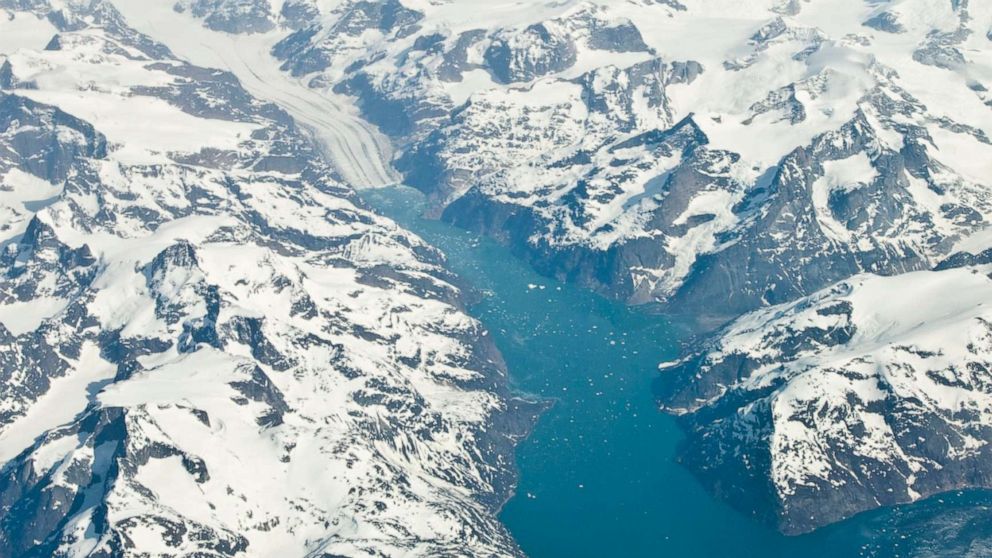Scientists examine some of the oldest rocks on a continent to understand plate tectonics
This is an Inside Science story.
(Inside Science) -- Scientists believe the way the Earth's tectonic plates began shifting and crashing into each other billions of years ago played a huge role in how our planet evolved and life developed. Similar processes may also play out on other planets. For Earth, the problem is, the remaining bits of the earliest continents that would solve that primeval jigsaw puzzle lie more than 100 miles below ground.
Now a team of earth scientists has accessed some of the oldest rocks in the core of a continent centered on the western part of Greenland. If others confirm their findings in other parts of the world, their research would imply that tectonic processes began pushing and pulling plates in ways that resemble today's continental movements around 3 billion years ago.
"With early Earth geology, you're trying to piece together very fragmentary pieces of evidence about what the planet may have looked like -- and that's very different than today," said Nicholas Gardiner, an earth scientist at the University of St. Andrews in Scotland who led the research. He and his colleagues are publishing their results in an upcoming issue of the journal Earth and Planetary Science Letters.
The story's built upon what are called cratons. These ancient hearts of today's continents resist buckling or deforming and see little of the drama of rising mountains and yawning valleys in the continents' outer regions. The North Atlantic Craton, for example, stretches from northern Scotland through Greenland to Canada, including the northern part of the Atlantic Ocean. The Earth's cratons likely played some role in the onset of plate tectonics on the young Earth, when the plates took shape and at times collided with one another.
Cratons have marks of the Earth's geological history written in them. They have incredibly deep roots or keels that extend deep into the Earth's crust and into the upper mantle. Within them lie relics of the past and possible hints of the beginnings of tectonics. The trouble is, it's not currently possible to drill down through so many layers of rock to reach the primordial cratons.
"You can't sample the craton unless nature does it for you," Gardiner said.
So, Gardiner and his colleagues traveled a couple hundred miles north of Nuuk, Greenland's capital, and found outcrops of rocks known as kimberlites. When volcanic processes bring pieces of the mantle from deep underground and through the Earth's crust, kimberlites crystalize and emerge on the surface, often studded with rough diamonds. But these mottled volcanic rocks have more valuable crystals, called zircons, embedded in them.
"I think the interesting part of the paper is the use of the zircons," said Michael Brown, a geologist at the University of Maryland in College Park. These stubby crystals about 100 microns in size, narrower than the width of a human hair, would otherwise be inaccessible, because without the kimberlites, they'd still be buried beneath the crust. By spotting them and studying their chemistry, Brown says, Gardiner's team is showing that they indeed recovered a few pieces of the Earth's crust that date back more than 3 billion years.
The different forms of the atoms of uranium, lead and hafnium within the crystals reveal not just the ages of parts of the North Atlantic Craton but also how it formed. It could have grown either by building up layers vertically or by horizontal forces squishing and stacking up slices of the crust. The kimberlites look like they've picked up bits from overlapping slices, supporting the latter view, at least in this region. It suggests that the craton formed from continental plates pushing against each other: that is, from the process of plate tectonics.
Some form of plate tectonics might have begun from this North Atlantic Craton between 2.5 billion and 4 billion years ago, Gardiner said, and then spread from there. Or these findings at least indicate subduction, where plates overlap and one edge gets forced beneath the other. They'll need similar studies on other cratons to shed more light on the question.
It's also relevant to the origins of life. When plate tectonics gets going, it very slowly recycles the crust, including ocean water, into the atmosphere, and keeps the atmosphere stable with plenty of oxygen. The atmosphere stabilized around 2.4 billion years ago and probably coincided with the beginning of microbial life, said Joann Stock, a geophysicist at Caltech in Pasadena.
She points out that there are areas on Venus like these old cratons, and other planets likely have them, too.
"For exoplanet evolution and for understanding which of the planets are in the habitable zone and which might be hospitable for Earth beings to live on -- that will depend on what kind of atmosphere they have, and that's also where plate tectonics is really important," Stock said.
Inside Science is an editorially-independent nonprofit print, electronic and video journalism news service owned and operated by the American Institute of Physics.





